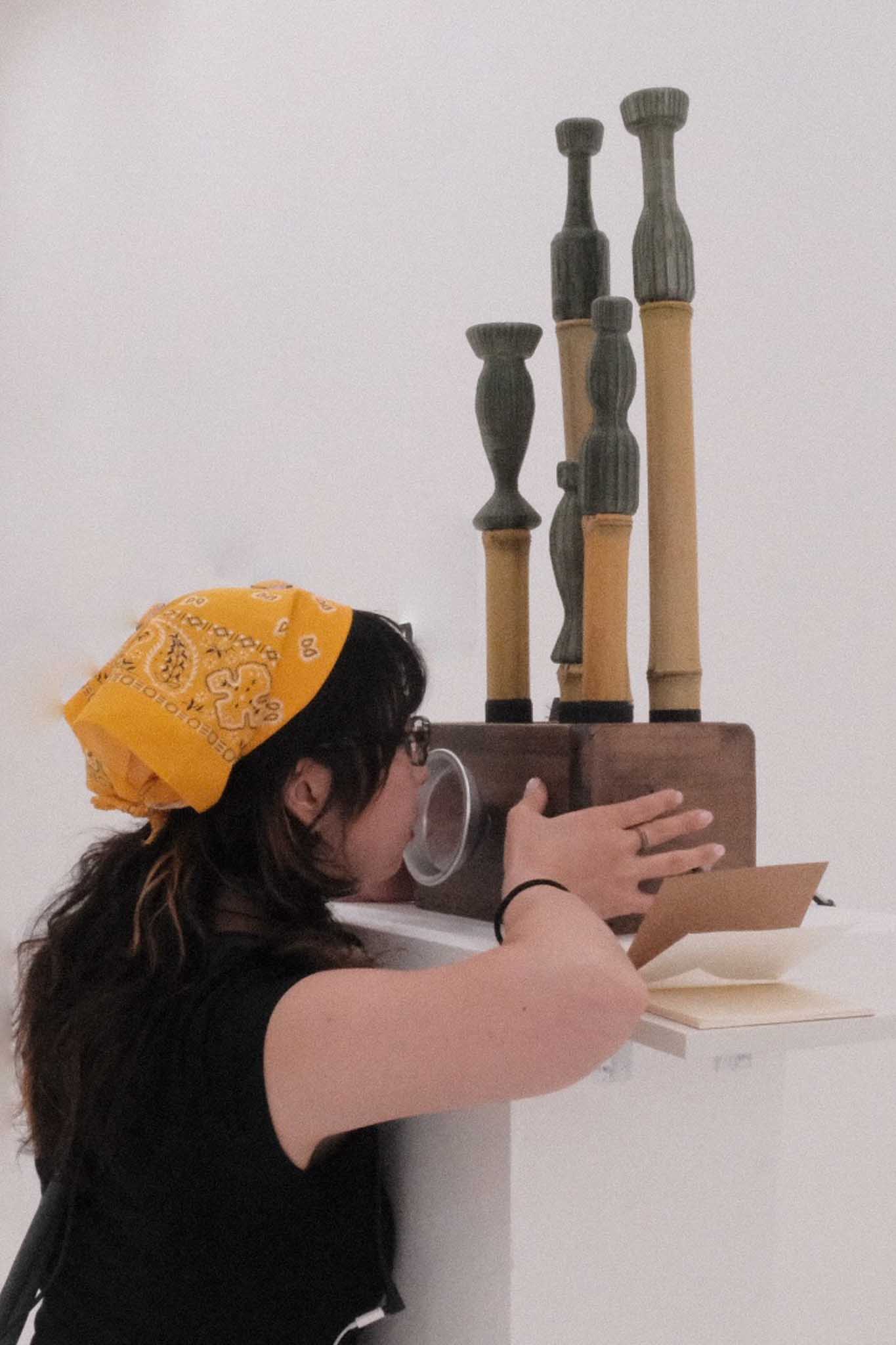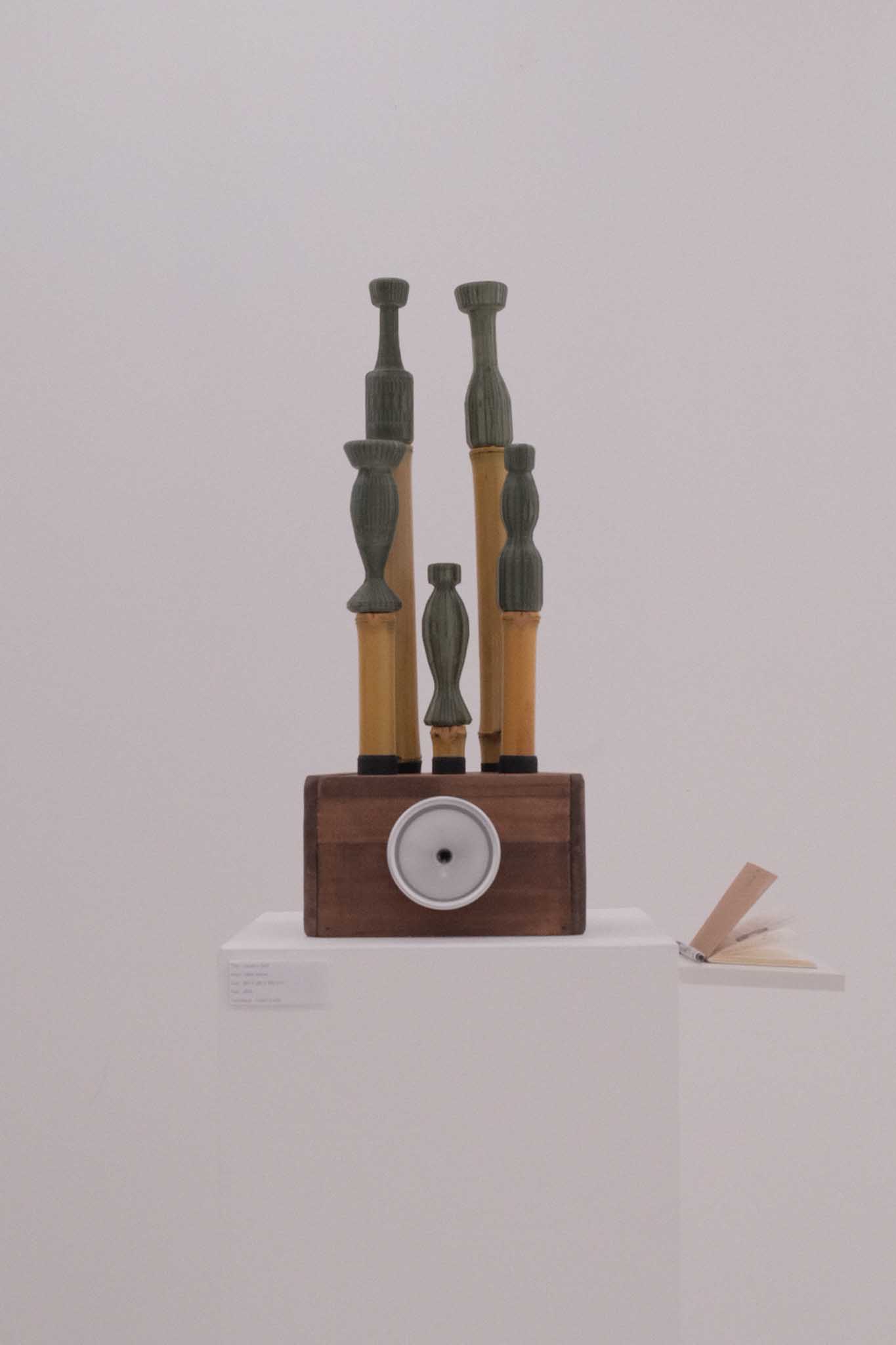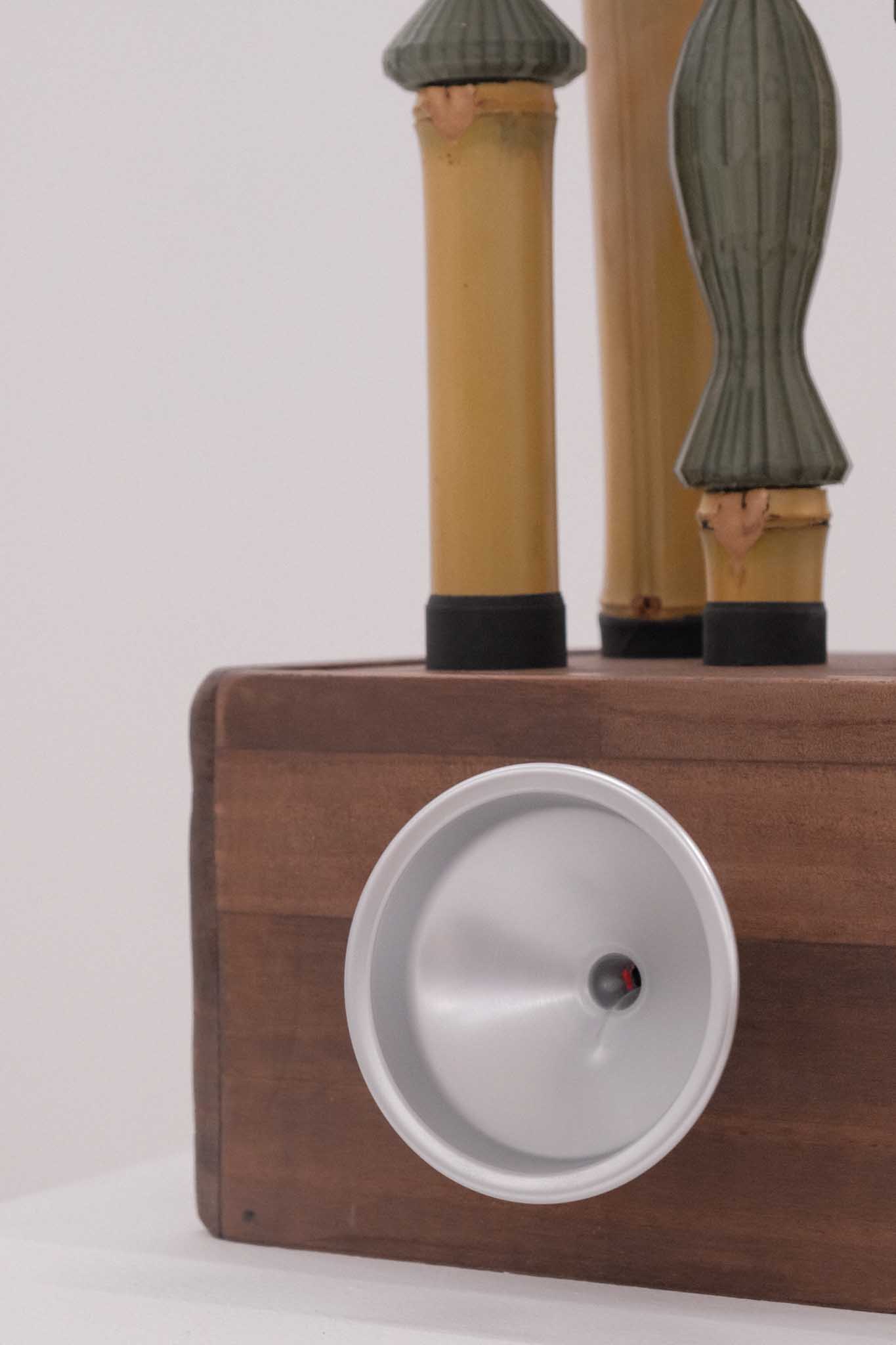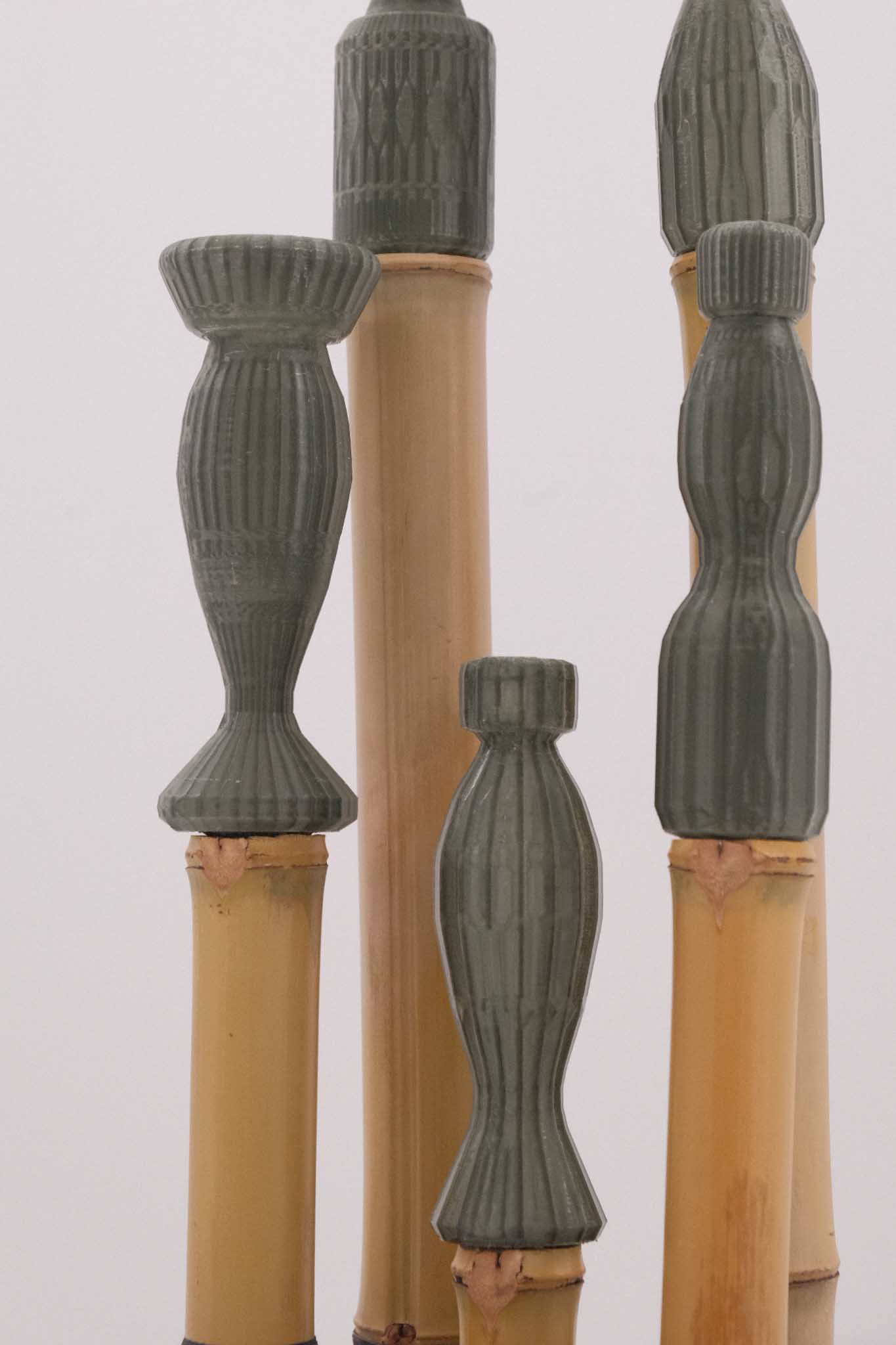< aiueo > SHO
2025
Performative Instrument, Interactive Sound Piece
This electronic wind instrument is built around the five Japanese vowels: a, i, u, e, o. Each vowel is embodied through a custom-designed vocal tract model, drawing inspiration from the research of Takayuki Arai. These models—crafted from shaped plastic tubing—mimic the formant structures of human speech, and are paired with formant-based oscillators to synthesize human voice.
The instrument was inspired from the shō (笙 ), a traditional Japanese free reed instrument descended from the Chinese sheng. Introduced during Japan's Nara period (AD 710–794), the shō features 17 slender bamboo pipes with metal reeds, two of which remain silent—possibly for aesthetic or historical reasons, as suggested by Heian-era performance practices. Echoing the shō in both form and breath-based play, this new instrument reimagines a voice creation mask with its vocal-like resonance.
The player engages with it by holding a body form (kashira), blowing into a mouth piece, and pressing buttons that activate individual vowel tubes. It can play a single note to multiple notes up to 5 notes. The chords and pitches can be shifted with buttons on the left side and those sounds are following traditional chords of shō.
Shō is used for old Japanese court music. It has the smallest body of court music instruments but shō can deliver its sound to the furthest. The length of the tube determines each note’s pitch. Also this instrument can be constantly running sound as the sound can be produced both the player inhaling and exhaling.
Formant model development by Takayuki Arai, Book photo by edgar akiyama.



